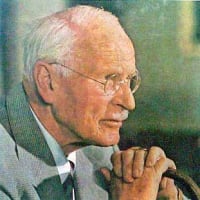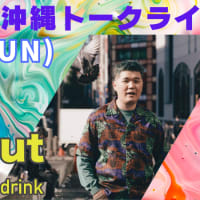
エドワード・エディンガー博士の解説書の意図するところは、同封されている抜粋文で明らかになると思います。
"C.G.ユングの『ヨブ記への答え』は、ヨブ記の物語が現代人の精神にとって極めて重要であることを立証しました。ゲーテの『ファウスト』、メルヴィルの『モビー・ディック』、ブレイクの『ヨブ記の挿絵』など、現代におけるヨブ記の他の表現との関連性が、このテーマに注目することで、より明確に見えてきます。
ユングは、"ヨブ記は、現代の私たちにとって特別な意味を持つ、ある種の神の経験のパラダイムとして機能している "と語っています。言い換えれば、ヨブ記は、自我と自己の間のある典型的な出会いを描いた元型的なイメージです。この典型的な出会いを「ヨブの元型」と呼ぶことができる。ヨブの元型の主な特徴は次のとおりです。
1)自我と大いなる人格(神、天使、優れた存在)との出会い。
出会いの結果、自我に傷や苦しみが生じる。
3)試練に耐え、意味を求めて経験を吟味し続ける自我の忍耐力。
4)神の啓示により、自我がトランスパーソナルな精神への何らかの洞察を得て報われること。
ヨブ記の他にも、この元型の例はたくさんあります。例えば、次のようなものが挙げられます。ヤコブとヤハウェの天使、アルジュナとクリシュナ、パウロとキリスト、モーゼとエル・キドル、ファウストとメフィストフェレス、エイハブ船長とモビー・ディック、ニーチェとツァラトゥストラ、ユングとフィレモン。
ヨブ記」は、個人のエゴが大いなる人格である「自己」と決定的に出会う場面を描いています。この出会いによって自我は傷つき、無意識への降下、つまりネキシアを引き起こします。ヨブはこの経験の意味を問い続けたため、その忍耐は神の啓示によって報われます。自我はその完全性を堅持することで、自己の実現を認められます。
議論の枠組みとして、私は1825年に出版されたウィリアム・ブレイクの『ヨブ記の挿絵』を取り上げました。この一連の22枚の版画は、ブレイクが65歳を超えてから制作されたブレイクの代表作です。彼の最後の大作である。この版画は、インスピレーションに満ちており、物語の傍らに置くのにふさわしいものです。ブレイクがヨブ記を描いたことで、この元型的なイメージが現代人、あるいはほとんど現代人の無意識に与える影響がわかります。ブレイクがこれらの絵で意識的に伝えようとしたことは、学者が教えてくれる。しかし、多くの偉大な芸術作品と同様に、ブレイクは自分が知っている以上のことを表現したのである。これらの絵の中では、客観的な精神が私たちに直接語りかけているのです。"
R
I think the enclosed excerpt should clarify what Dr. Edward Edinger intends with his commentary.
"C.G. Jung's Answer to Job has established the story of Job as crucial to the psyche of modern man. With our attention focused on this theme we can now see more clearly the relevance of its other expressions in modern times, as for instance Goethe's Faust, Melville's Moby-Dick and Blake's Illustrations of the Book of Job.
Jung tells us that "the Book of Job serves as a paradigm for a certain experience of God which has a special significance for us today." In other words, the Job story is an archetypal image which pictures a certain typical encounter between the ego and the Self. This typical encounter may be called the Job archetype. The chief features of the Job archetype are:
1) an encounter between the ego and the Greater Personality (God, Angel, Superior being);
2) a wound or suffering of the ego as a result of the encounter;
3) the perseverance of the ego which endures the ordeal and persists in scrutinizing the experience in search of its meaning;
and 4) a divine revelation by which the ego is rewarded with some insight into the transpersonal psyche.
In addition to the Book of Job there are many other examples of this archetype. For instance, I would mention the following: Jacob and the Angel of Yahweh, Arjuna and Krishna, Paul and Christ, Moses and El-Khidr, Faust and Mephistopheles, Captain Ahab and Moby-Dick, Nietzsche and Zarathustra, Jung and Philemon.
The Book of Job represents an individual ego's decisive encounter with the Self, the Greater Personality. The ego is wounded by this encounter which provokes a descent into the unconscious, a nekyia. Because Job perseveres in questioning the meaning of the experience his endurance is rewarded by a divine revelation. The ego, by holding fast to its integrity, is granted a realization of the Self.
As a framework for the discussion I have chosen to comment on William Blake's Illustrations of the Book of Job, published in 1825. This series of twenty-two engravings is Blake's masterwork, done when he was beyond the age of sixty-five. It was his last major completed work. These engravings are inspired and are worthy to be set beside the story which they illustrate. Blake's rendering of the Job story shows us the effect of this archetypal image on the unconscious of a modern, or almost modern, man. Scholars can inform us what Blake consciously intended to convey in these pictures. However, as with most great works of art, Blake expressed far more than he knew. In these pictures the objective psyche speaks directly to us."
nekyia.ネキシア(ネキア)
https://en.wikipedia.org/wiki/Nekyia
CGユングは、彼の分析心理学の不可欠な部分としてネキアの概念を使用しました:「ネキア...無意識の精神のより深い層への意識的な精神の内向性」。[9]ユングにとって、「ネキアは目的のない、または破壊的な深淵への陥落ではなく、意味のあるカタベーシス ...その目的は人間全体の回復である」。[10]
Jolande Jacobiは、「この「偉大なNekyia」は...無数のより少ないNekyiaの経験と織り交ぜられている」と付け加えました。[11]
夜の海の旅[編集]
ユングは、の「海の上の夜の旅...モンスターの腹に(地獄への旅を)降りる」、とのNekyiaの画像を使用「『Katabasis』(下の世界に降下)」[12]ほぼ互換性があります。彼の最も近い信者はまた、それらを「無意識の暗くて熱い深さへの降下...地獄への旅と「死」」の見分けがつかない比喩として見ました-たとえば、「夜の海の旅の大きな弧は多くを含むリズムが少なく、同じ「原始的なパターン」の弧が少ない、「」[13]ネキアのように。
しかし、ポストユングのジェームズヒルマンはそれらの間でいくつかの明確な区別をしました:
冥界の降下は多くの点で主人公の夜の海の旅と区別することができます...主人公は人生の仕事のためにより良い形で夜の海の旅から戻りますが、nekyiaは魂をその深みに連れて行きます「帰り」がないように自分の酒。夜の海の旅は、内部の熱(タパス)を構築することによってさらに特徴づけられますが、ネキアはその圧力のかかった封じ込めを下回り、情熱の火で和らげ、完全な寒さのゾーンに行きます...悪魔のイメージはまだ私たちの恐怖に悩まされていますそこに潜んでいると思われる無意識と潜在的な精神病の、そして私たちはまだキリスト教の方法に目を向けています-道徳的、親切な感情、共同共有、そして子供のようなナイーブ…(のみ)彼のnekyiaの後、[14]
https://www.youtube.com/watch?v=Jx3_4XZ8NGI
Edinger’s “Portable Analytic Hour” ساعة تحليلية – Part 1 - "Encounter with the Self"
エジンガーの「ポータブル・アナリティクス・アワー」の第2部はこちらからご覧いただけます:https://youtu.be/Ikze1T6VVJM
このビデオにアラビア語字幕を追加しました。 "歯車 "をクリックして "字幕 "を選択してから "アラビア語 "を選択してください
エドワード・エジンガー博士による ウィリアム・ブレイクの「ヨブ記の挿絵」の解説です。 インナーシティブックスから出版されています
01:19 エディンガーの定義「自己」、超人格的な中心、神のイメージ。
01:50 "自己 "との経験は常に自我の敗北である" C.G.ユング
02:18 「このセンター(「自己」)の発見は、地球外知性の発見のようなものです。
03:15 私たちは、人を全体にするお方に出会う。
03:18 はじめに-"C.G.ユングの『ヨブへの答え』は、現代人の精神にとって重要なものとしてヨブ記の物語を確立した。"
04:02 「ヨブの物語は、自我と自己との間のある典型的な出会いを描いた典型的なイメージである。 この典型的な出会いは『ヨブ元型』と呼ばれるかもしれません。
05:00 本質化されたヨブの元型-[コンテスト-敗北-嘆き-再生]。
05:36 ヨブサイクルを経るたびに、自我が強くなります。 このトピックについては、このチャンネルの別のビデオをご覧ください:"本物の人生を生きる方法"
07:20 『ヨブへの答え』はプリンストン大学出版局、50周年記念版、2010年に別冊で発売されています。
08:32 ユング博士は心理芸術と幻視芸術を区別しています。
10:33 タイトルページ-ゼカリヤ4:10、黙示録5:6、ヨブ記1:7-神の目のテーマがすぐに紹介される。
11:30 吟味の対象と対象が逆になる。 ヤハウェがヨブを吟味するのではなく、ヨブがヤハウェを吟味しているのです。 神の目」というテーマについては、Edward F. Edinger, The Creation of Consciousness (Toronto: Inner City Books, 1984), pp.
12:49 写真1は、無意識の思い込みと集合的な封じ込めに安心感を覚える「無意識の自我」を示しています。
13:00 参加のミスティークの状態。
13:45 分身に刻まれている、"文字は殺すが、精神(霊)は命を与える" "犠牲にされるのは、御言葉(ロゴス)と、それに依存するヨブの信頼である」と、御霊(エロス)のために。
14:23 絵2 「無意識が活性化された。
14:57 自律霊であるサタンがヤハウェに近づく。
15:02 サタンは、個別化とより大きな意識への衝動を表しています。
15:27 成熟度という意味では、この時点でヨブは(他の子供のように)ヤハウェの恩恵だけを知っていますが、ヤハウェは良いことも悪いことも含めて全体として知られる必要があります(これは人生に対する成熟した態度です)。
16:06 主語(この場合はヤハウェ)が "自分自身についての洞察力を持たない "場合、自己反省の欠如は絶対的なものである。
17:20 「善は理性に従う受動的なものであり、悪はエネルギーから湧き出る能動的なものである。
18:57 ブレイクはパラドックスを提示している。
19:20 イエスは「わたしに近い者は火に近い」と言っている。
19:43 絵3 - "この絵では、エネルギーのダイナミズムがその最高音程に達し、ほぼ純粋な爆発的エネルギーが意識の中で噴出し、それを含む構造を破壊する。" 現在の出来事を比較してみてください。
20:38 絵4 「悪いニュースの到来。
22:23 画像5 - ヨブは伝統的な美徳に戻ることで症状に反応した。 一方、サタンは彼に火を注ごうとしています。 これは、自我がしばしば精神的な症状に対処しようとする方法です。
23:45 画像6「ここでは、限定された適応さえも壊れてしまう.... これは急性の崩壊の絵です。 すべての防御が崩壊しています。" これが太陽の最後の一瞥です。
25:16 ベルニーニの彫刻「聖テレジアの恍惚」への言及 By Alvesgaspar 著- 自作, CC BY-SA 4.0, https://commons.wikimedia.org/w/index...
25:27 容器としての自我は、それが耐えられる以上のものを注ぎ込めば壊れてしまう。
25:34 割れた器のモチーフはルリアン・カバラに見られる。
26:06 "ヨブは神の名を冠する選ばれた器と呼ばれるかもしれない" 使徒言行録9:15
26:50 "もはや私は世の住人に優しさを示すつもりはない" ゼカリヤ11:6-10
28:50 "痛みは存在の偉大な謎である"
30:25 ユングの神の定義。
エジンガーの「ポータブル・アナリティクス・アワー」の第2部はこちらからご覧いただけます:https://youtu.be/Ikze1T6VVJM
公正使用に関する注意事項
このビデオには著作権で保護された素材が含まれていますが、その使用は必ずしも著作権所有者によって明確に許可されているわけではありません。
我々は、これが米国著作権法のセクション107で提供されるような著作権で保護された素材の'公正な使用'を構成していると考えています。
タイトル17 U.S.C. セクション107に従って、このサイト上の資料は、研究や教育目的のために含まれている情報を受け取ることに事前に興味を示した人々に利益を得ることなく配布されています。
フェアユース」を超えて、自分自身の目的のためにこのサイトの著作権で保護された素材を使用したい場合は、著作権所有者の許可を得なければなりません。
www.DeepL.com/Translator(無料版)で翻訳しました。
Part 2 of Edinger's "Portable Analytic Hour" can be found here: https://youtu.be/Ikze1T6VVJM
We have added Arabic subtitles to this video. Click on the Gear; Select "Subtitles," then Select "Arabic."
Commentary on William Blake’s Illustrations of the Book of Job by Dr. Edward Edinger. It is published by Inner City Books.
01:19 Edinger’s definition of “Self,” the trans-personal Center, the God-Image.
01:50 “The experience with the “Self” is always a defeat for the Ego.” C.G. Jung
02:18 “The discovery of this Center (the “Self) is like the discovery of Extraterrestial Intelligence.
03:15 We meet the One who makes one Whole.
03:18 Introduction—“C.G. Jung’s Answer to Job has established the story of Job as crucial for the Psyche of modern man.”
04:02 “The Job story is an Archetypal image, which pictures a certain typical Encounter between the Ego and the Self. This typical Encounter may be called ‘The Job Archetype’.”
05:00 Essentialized Job Archetype - [Contest-Defeat-Lamentation-Rebirth].
05:36 Each time you go through the Job cycle, your Ego becomes stronger. You can find another video on this channel on this topic entitled: “How to Live an Authentic Life.”
07:20 Answer to Job is available separately from Princeton University Press, 50th Anniversary Edition, 2010.
08:32 Dr. Jung distinguishes between psychological and visionary art.
10:33 Title Page – Zechariah 4:10; Revelation 5:6; Job 1:7 – The Theme of the Eye of God is immediately introduced.
11:30 The Subject and Object of scrutiny becomes reversed. Instead of Yahweh scrutinizing Job; Job is scrutinizing Yahweh. For more on the “eye of God” theme, see Edward F. Edinger, The Creation of Consciousness (Toronto: Inner City Books, 1984), pp. 42ff.
12:49 Picture 1 shows the Unconscious Ego, which feels secure in its Unconscious assumptions and its collective containments.
13:00 A state of participation mystique.
13:45 Inscribed in the alter, “The letter killeth; the Spirit giveth Life.” “It is The Word (Logos), and Job’s reliance on it, which are to be sacrificed” in favor of the Spirit (Eros).
14:23 Picture 2 - The Unconscious has been activated.
14:57 Satan, the autonomous Spirit, approaches Yahweh.
15:02 Satan represents the urge to Individuation and greater Consciousness.
15:27 In terms of maturity, at this point Job (like any child) has known only the benefits of Yahweh, but Yahweh needs to be known in his totality, good and bad (which is a mature attitude toward life).
16:06 Lack of self reflection is absolute when the Subject (in this case Yahweh) “has no insight into himself.”
17:20 “Good is the passive that obeys reason [Logos]; Evil is the active springing from energy [Eros].”
18:57 Blake is presenting a paradox.
19:20 Saying of Jesus, “He who is near to me is close to the fire.”
19:43 Picture 3 – “In this picture, the energy dynamism reaches its highest pitch, almost pure explosive energy erupts in consciousness, destroying its containing structures.” [Compare current events.]
20:38 Picture 4 – The arrival of the bad news.
22:23 Picture 5 – Job has reacted to his symptoms by reverting to the traditional virtues. Meanwhile, Satan is about to pour fire on him. This is the way the Ego often tries to deal with psychic symptoms.
23:45 Picture 6 – “Here even the limited adaptation breaks down.... This is the picture of an acute breakdown. All defenses have collapsed.” This the final glimpse of the sun.
25:16 Reference to Bernini’s sculpture, “The Ecstasy of St. Theresa” By Alvesgaspar - Own work, CC BY-SA 4.0, https://commons.wikimedia.org/w/index...
25:27 The Ego, as a container, can break if more is poured into it than it can stand.
25:34 The motif of the broken vessel is found in the Lurianic Cabbala.
26:06 “Job could be called a chosen vessel to bear God’s name.” Acts 9:15
26:50 “No longer am I going to show kindness to the inhabitants of the world.” Zechariah 11:6-10
28:50 “Pain is the great enigma of existence.”
30:25 Jung’s definition of God.
Part 2 of Edinger's "Portable Analytic Hour" can be found here: https://youtu.be/Ikze1T6VVJM
Fair Use Notice
This video contains copyrighted material the use of which has not always been specifically authorized by the copyright owner.
We believe this constitutes a 'fair use' of any such copyrighted material as provided for in section 107 of the US Copyright Law.
In accordance with Title 17 U.S.C. Section 107, the material on this site is distributed without profit to those who have expressed a prior interest in receiving the included information for research and educational purposes.
If you wish to use copyrighted material from this site for purposes of your own that go beyond 'fair use', you must obtain permission from the copyright owner.
Encounter With the Self: A Jungian Commentary on William Blake's Illustrations of the Book of Job (Studies in Jungian Psychology) ペーパーバック – 1986/1/1
Edward F. Edinger (著)



















